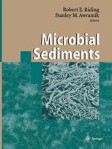Search
Search Results
-
Structure of the precambrian sedimentary cover and upper part of the basement in the Central Russian Aulacogen and Orsha Depression (East European Platform)
The Precambrian sedimentary section and upper part of the basement of the Central Russian Aulacogen and Orsha Depression, two largest structures...
-
Viable Cyanobacteria and Green Algae from the Permafrost Darkness
This review represents an overview of the existence, distribution and abundance of the photoautotrophic microorganisms in the deep subsurface...
-
Microfossils from the Arymas and Debengda formations, the Riphean of the Olenek Uplift: Age and presumable nature
Studied assemblages of diverse organic-walled microfossils separated from the Arymas and Debengda formations of the Olenek Uplift include several...
-
On the nature of the Precambrian microfossils Arctacellularia and Glomovertella
Possible phylogenetic relationships between the organic-walled microfossils of the form genus Arctacellularia Hermann, 1976, representing chainlike...
-
Postglacial sedimentary record and history of West Hawk Lake crater, Manitoba
West Hawk Lake (WHL) is located within the glacial Lake Agassiz basin, 140 km east of Winnipeg, Manitoba. The small lake lies in a deep, steep-sided,...

-
New Riphean microbiotas of the Billyakh Group, the north Anabar region (Fomich River basin): To Riphean biostratigraphy of the Siberian platform
Excellently preserved organic-walled and silicified microfossils are first found in the Lower Riphean Ust-Il’ya and Kotuikan formations of the...
-
Principal stages in evolution of Precambrian organic world: Communication 1. Archean and Early Proterozoic
Expounded in this work are the results of critical consideration of published and original data on biologic nature and appearance chronology of...
-
The importance of Precambrian microfossils for modern biostratigraphy
A new model of the distribution of Proterozoic microorganisms is developed, based on studies of Riphean and Vendian silicified and organic-walled...
-
Habitats and probable nature of acritarchs from the Upper Riphean Chencha Formation
Morphology and taphonomy of acritarchs from the Upper Riphean deposits of the Baikal Folded Region (eastern Siberia) are analyzed. The morphotypes of...
-
Palaeobiology of Mesoproterozoic Salkhan Limestone, Semri Group, Rohtas, Bihar, India: Systematics and significance
Mesoproterozoic (∼ 1600 Ma old) Salkhan Limestone (Semri Group) of the Vindhyan Supergroup, exposed in Rohtas district of Bihar, India, preserves an...
-

-
DIVERSITY, DISTRIBUTION AND BIOGEOCHEMICAL SIGNIFICANCE OF NITROGEN-FIXING MICROORGANISMS IN ANOXIC AND SUBOXIC OCEAN ENVIRONMENTS
Nitrogen fixation, the reduction of atmospheric dinitrogen (N2) to biologically available ammonium, has been important in the balance of biologically...
-
The History of Recent Limnological Changes and Human Impact on Upper Klamath Lake, Oregon
Hypereutrophic Upper Klamath Lake has been studied for almost 50 years to evaluate the nature, cause, and effects of its very productive waters....
-
Anomalous magnetic susceptibility values and traces of subsurface microbial activity in carbonate banks on San Salvador Island, Bahamas
Pure limestones beneath the paleosols on San Salvador Island, Bahamas, contain strong positive magnetic susceptibility anomalies, although the iron...

-
A 1500-year record of climatic and environmental change in ElkLake, Minnesota III: measures of past primary productivity
Diatom analysis of a varved sediment core from Elk Lake, Minnesotadocuments important natural and human-caused shifts in primary productivity...
-

-
Subaerial Microbial Mats and Their Effects on Soil and Rock
Microbial mats (or biofilms) under permanent water cover contain 95–98% biologically stabilised water at ambient temperature, while biofilms in...
-
Anthropogenic changes in the sediment composition of Lake Gości& aogon;ż (central Poland), during the last 330 yrs*
According to historical sources, the development of settlement around Lake Gości& aogon;ż during the last 330 yrs was intense at two time periods:...
-
A summary of past and recent plankton of Lake Winnipeg, Canada using algal fossil remains
Although the phytoplankton and protozoan assemblages of Lake Winnipeg are quite variable both, spatial and temporally, knowledge of their current...
